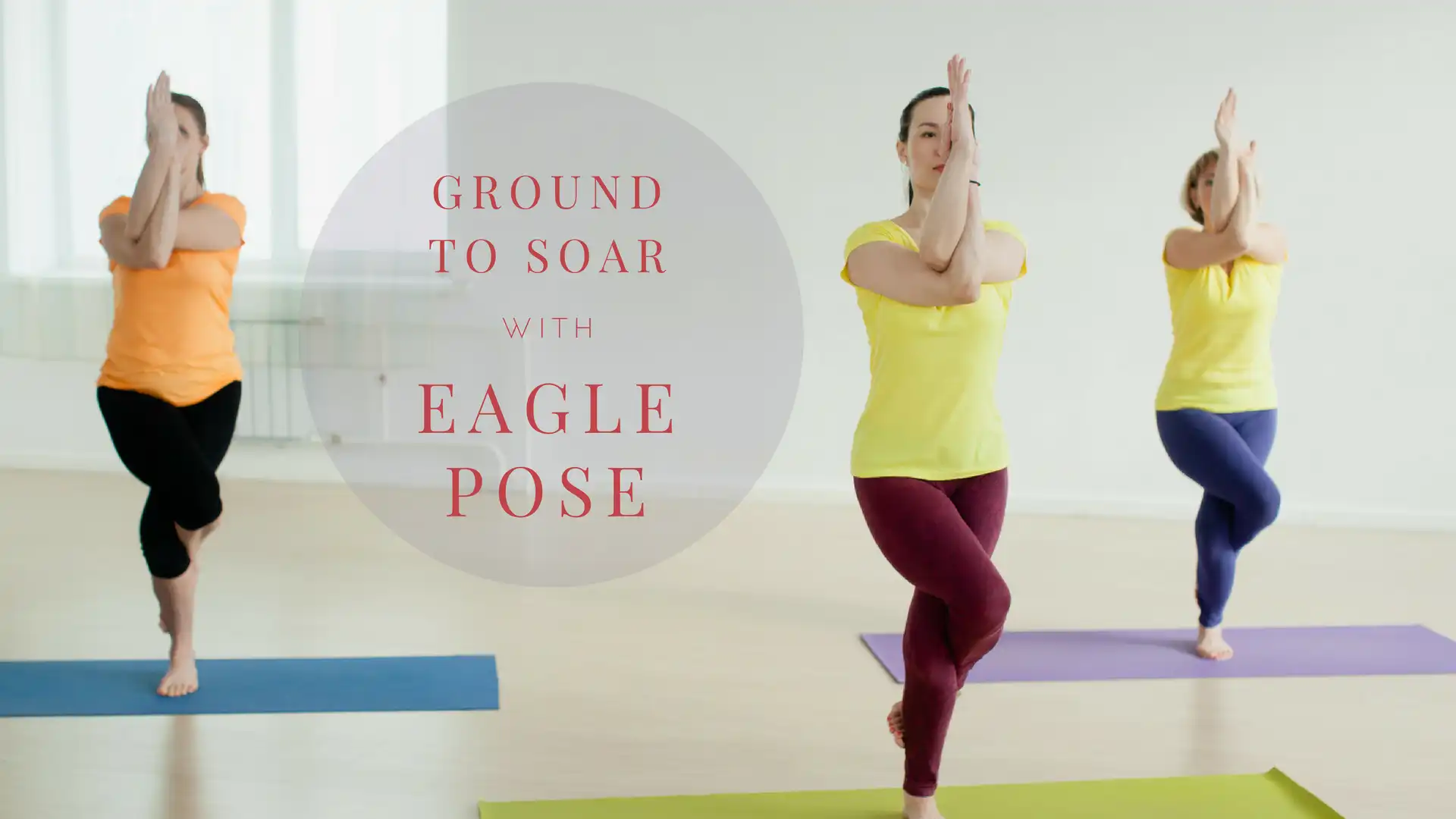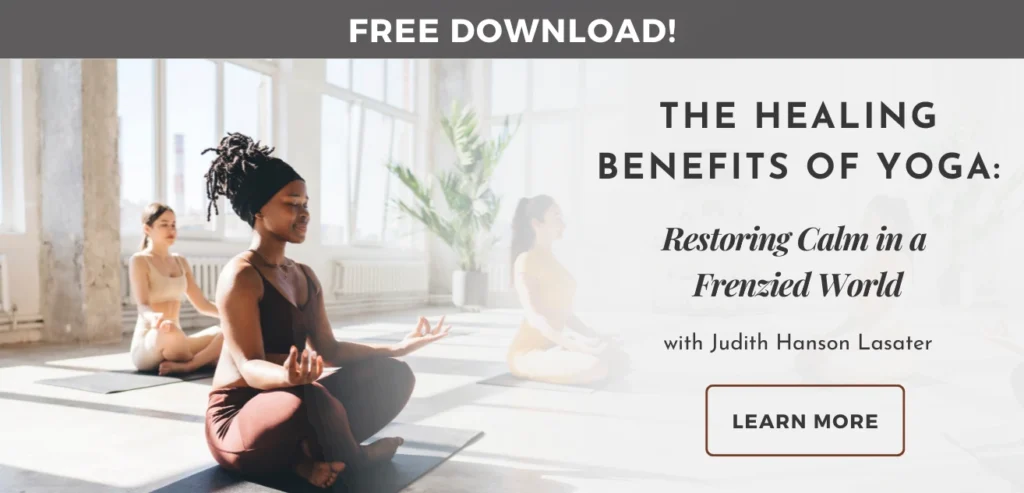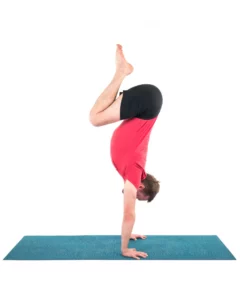Garudasana: How to Spread Your Wings

As gods go, Garuda is gargantuan. When he was first hatched from a giant egg, the half-man, half-eagle’s monstrous size so frightened the other Hindu gods that they implored him to shrink himself, which he happily did. In Garudasana (Eagle Pose), we “shrink” ourselves as well, drawing inward and settling before spreading our wings.
Garuda is known for his ability to grow and shrink in size at will, and to appear and disappear. The Buddhist version of Garuda is said to have had a 40-mile wingspan. When he flaps his wings, Garuda dries up the waters of the ocean in order to expose sea monsters that he then consumes. Garuda’s wing flaps can also move mountains and cause hurricanes.
Garuda is ubiquitous in the East. His image is the national symbol of Thailand and Indonesia, and his legends span across Hinduism and Buddhism. He plays a starring role in the first book of India’s epic, Mahabharata.
Garudasana Benefits
Garuda is simultaneously a fierce devourer and compassionate protector. When he takes on his ginormous form, he rids the oceans of nasty dragons and devours slimy serpents, beings for whom he has had a lifelong distaste. In his more diminutive state, he lovingly watches over mountains and temples.
For us mortal humans, practicing Garudasana strengthens ankles, calves and thighs while relieving some cases of sciatica. It may increase our own wingspans by widening that often-compressed space between our shoulder blades. Garudasana challenges our balance, teaching us concentration that calms the mind. According to Return Yoga’s website, “Garudasana is the gargoyle protecting the heart’s temple, the egg that seeds our capacity to fly.”
How to Fly with Eagle Pose
All you need to practice Garudasana is a level surface to stand on. Flooring such as wood, concrete, tile or linoleum, or a level piece of ground works better than carpet.
- Start in Mountain Pose (Tadasana), with your feet hips-width apart and arms comfortably resting at your sides. Take a moment to be aware of how you are standing. Check your breathing and how your feet are contacting the floor. Feel how your body is aligned over your feet. Relax your shoulders, neck and face.
- Tilt your pelvis forward and bend your knees up to 90 degrees.
- Shift your weight onto your right foot.
- Cross your left leg over your right leg, hooking your left ankle behind your right calf if you can. If not, rest your left leg over your right and flex your left foot. If your balance is shaky, feel free to place your left toes on the floor.
- Now cross your right upper arm over your left. Bend your elbows and bring your hands together. Hold onto the heel of your right hand with the fingers of your left. If your hands don’t connect, you can place your hands on opposite shoulders with your elbows in front of your chest.
- Lift your elbows up to shoulder level. Allow your back body to widen and your front body to draw back into the back body. This is Garuda’s modest, nurturing stance. Soften your facial muscles and eyes. Sit down into your right leg.
- Take 5 to 10 deep, full breaths.
- When you are ready to leave the pose, expand your arms and left leg outward. Think 40-mile wingspan. Take a deep inhalation and then return to Tadasana.
- Repeat on the other side.
A Few More Tips for Garudasana
- People with knee injuries can practice Garudasana by just bending your knees and keeping both feet on the ground while creating the arm position.
- If you have active rotator cuff injuries you are better off not crossing your arms for Garudasana. Instead, place your hands in prayer position in front of your heart.
Finding Balance
Our lives are a continuum of expanding and condensing. Like Garuda, we all need both to live a balanced life. Expanding and condensing, the outer and inner, are not possible without their counterparts. The bald eagles that winter along the Wasatch Front, here in Utah, show us this balance. They settle here and enjoy plentiful, easy meals before spreading their wings for their long migration.
Reprinted with permission from Hugger Mugger Yoga Products.
Also, read...
Cat-Cow Pose (Marjaryasana-Bitilasana)
2 Restorative Yoga Poses to Calm Your Body and Mind
Yoga Teaching & Practice: Parivrtta Trikonasana (Revolved Triangle Pose) – Tutorial Yoga Video
Related courses

Charlotte Bell began practicing yoga in 1982 and began teaching in 1986. She was certified by B.K.S. Iyengar in 1989 following a trip to Pune. In 1986, she began practicing Insight Meditation with her mentors Pujari and Abhilasha Keays. Her asana classes blend mindfulness with physical movement. Charlotte writes a column for Catalyst Magazine and serves as editor for Yoga U Online. She is the author of two books: Mindful Yoga, Mindful Life, and Yoga for Meditators, both published by Rodmell Press. She also edits Hugger Mugger Yoga Products’ blog and is a founding board member for GreenTREE Yoga, a non-profit that brings yoga to underserved populations. A lifelong musician, she plays oboe and English horn in the Salt Lake Symphony and the folk sextet Red Rock Rondo whose 2010 PBS music special won two Emmys.



